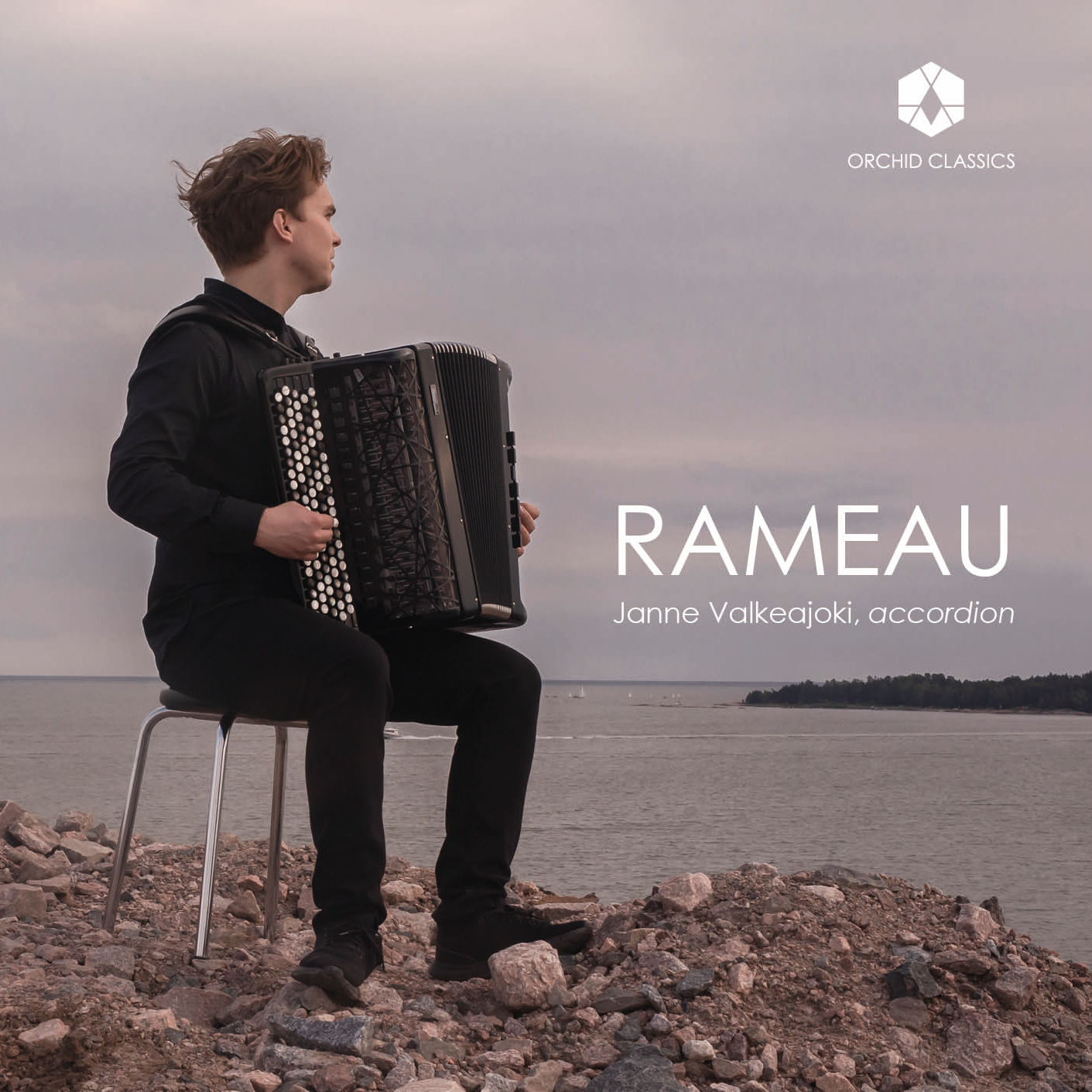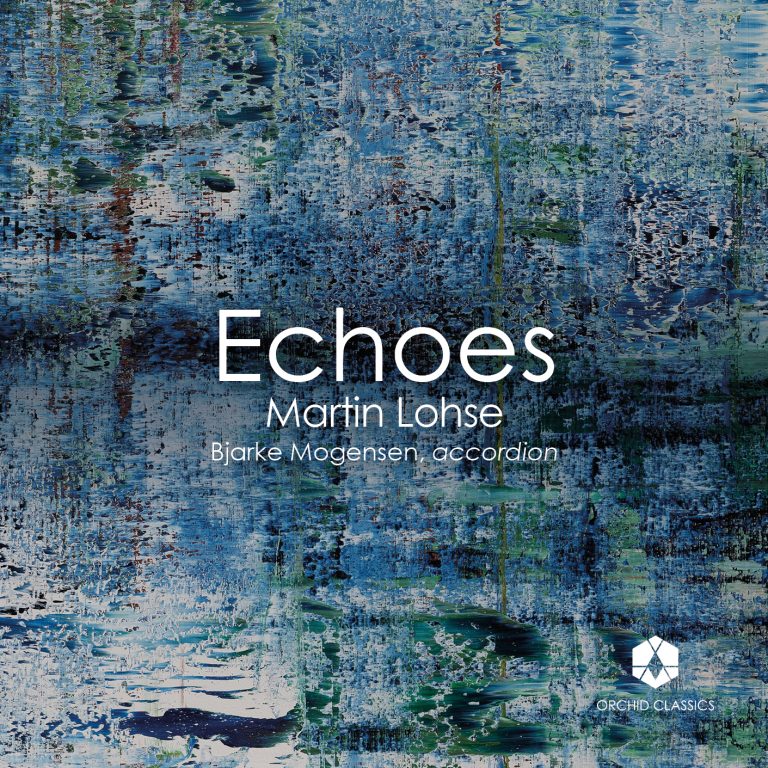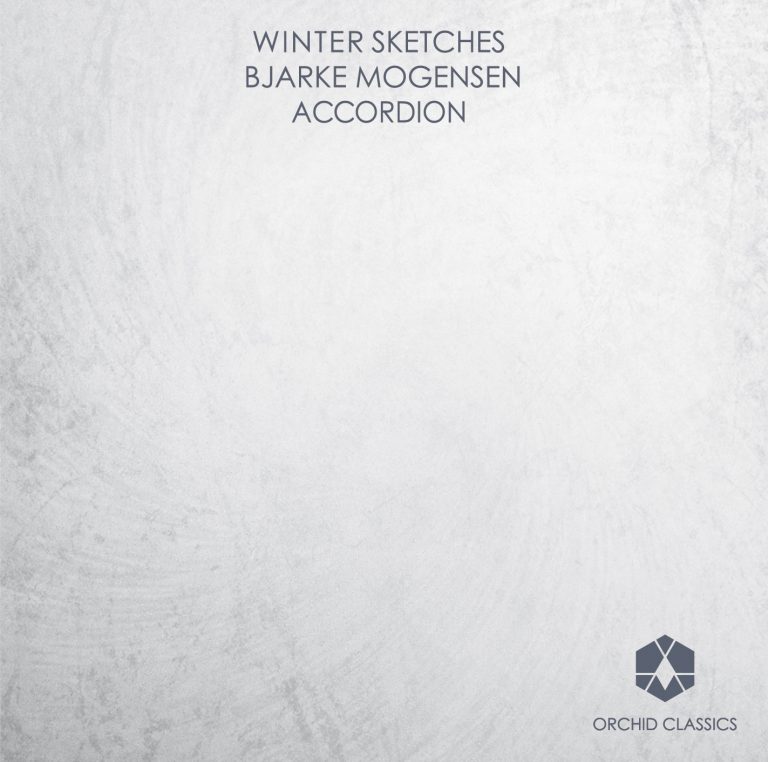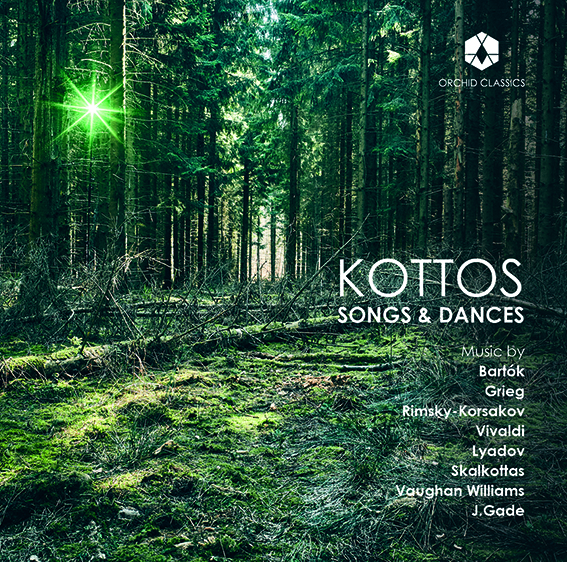Artist Led, Creatively Driven

Rameau
Janne Valkeajoki, accordion
Tuuli Lindeberg, soprano
Release Date: Jan 26th
ORC100281
RAMEAU
Jean-Philippe Rameau (1683-1764)
Pièces de Clavessin (1724)
Suite in D Major (RCT 3)
1. Les Tendres Plaintes – Rondeau
2. Les Niais de Sologne et Doubles des Niais
3. Les Soupirs
4. La Joyeuse – Rondeau
5. La Follette – Rondeau
6. L’Entretien des Muses
7. Les Tourbillons – Rondeau
8. Les Cyclopes – Rondeau
9. Le Lardon – Menuet
10. La Boiteuse
Castor et Pollux (1737, RCT 32)
11. Air de Télaïre: Tristes apprêts*
Nouvelles Suites de Pièces de Clavecin (1726-1727)
Suite in A Minor (RCT 5)
12. Allemande
13. Courante
14. Sarabande
15. Les Trois Mains
16. Fanfarinette
17. La Triomphante
18. Gavotte et six Doubles
Janne Valkeajoki, accordion
Tuuli Lindeberg, soprano*
I remember the first time I borrowed sheet music for Rameau’s compositions from the library. I couldn’t stop playing the music that seemed to have endless layers: simultaneously beautiful, humorous, exciting, and full of surprises – and yet still modern and relevant!
For this CD, I’ve chosen two suites from Rameau’s Pièces de Clavecin, initially written for harpsichord, Suite in D Major (from Pièces de Clavessin, 1724) and Suite in A Minor (from Nouvelles Suites de Pièces de Clavecin, 1726-1727). As common in the Baroque era, Rameau recycled his works on multiple occasions arranging the music for various ensembles. Opera was particularly dear to him, and many of the pieces heard on this CD later became parts of different operas as well. To celebrate the versatility of Rameau’s music and the singing quality of my instrument – the accordion – I wanted to include the spellbinding aria Tristes apprêts from the opera Castor et Pollux (1737). In the aria, I’m joined by the wonderful soprano Tuuli Lindeberg.
Rameau is a composer to whom I always return: no matter what I’ve been working on, Rameau’s music always feels like coming back home. Recording this album has been another journey with Rameau, and I feel happy to share the results.
Janne Valkeajoki
Jean-Philippe Rameau (1683-1764), one of the most prominent composers and music theorists of the French Baroque era, left a lasting legacy through his groundbreaking operas, keyboard music, and music-theoretical writings. Among his extensive body of work, the Suites in A minor (RCT 5) and D major (RCT 3), and the aria “Tristes Apprêts” from the opera “Castor et Pollux” (RCT 32) stand as remarkable examples of his compositional expertise, offering a glimpse into the musical inventiveness of the Enlightenment. These works not only showcase Rameau’s mastery of the harpsichord but also reveal his unique approach to operatic music that was influential during the 18th century.
Jean-Philippe Rameau lived through a transformative period in European music history. The French Baroque era, spanning the late 17th to the early 18th century, was characterised by elaborate ornamentation, expressive melodies, and a rich harmonic language. In the early part of his career, Rameau wrote keyboard music and music-theoretical texts, which laid the foundation for his later inventive works for the stage.
Rameau’s theoretical work, notably Traité de l’harmonie (Treatise on Harmony), written in 1722, was innovative in exploring harmony, chord progressions, and tonality. He introduced the concept of the “fundamental bass,” which outlined the harmonic structure of music. This soon made him well known, followed in 1726 by another music-theoretical writing, Nouveau système de musique théorique (The New System of Musical Theory). In these writings, the structure and principles of music were intended to be illuminated by analysis, commentary, mathematics, and Cartesian deduction. This pursuit of treating the subject scientifically indeed reflects the spirit of the Enlightenment.
Rameau’s compositions are characterised by their emotional depth and complexity. His music often features intricate ornamentation, richly textured harmonies, and a keen sense of drama. These qualities are manifested in his early books for harpsichord, such as Pièces de Clavessin (1724) and Nouvelles Suites de Pièces de Clavecin (1726/1727). In this recording, Suite in D major (RCT 3) from the book Pièces de Clavessin and Suite in A minor (RCT 5) from the book Nouvelles Suites de Pièces de Clavecin serve as exemplars of these features. Above all, we hear the accordion’s vast expressive possibilities in Rameau’s music.
The Suite in A minor is a compelling collection of pieces demonstrating Rameau’s ability to craft intricate, expressive music. This suite consists of a series of dance movements and character pieces, each with a unique spirit and charm. As Rameau was deeply influenced by the dance forms of his time, this suite incorporates various baroque dance movements such as allemande, courante, sarabande, and gavotte. Besides this, we hear character movements in this recording as Les Trois Mains (“The three hands”), Fanfarinette (derives from the word “fanfaron” meaning “braggart”), and La Triomphante (“The Triumphant”). In Rameau’s operas, one of these pieces returns: Sarabande in Zoroastre (1749). An interesting detail also is that Les Trois Mains calls for playing it in the manner of Domenico Scarlatti, with hands jumping over each other, and the notation of this piece communicates this idea. It should also be added that the Gavotte can be interpreted as a form of variations, consistent with the later understanding of the Classical period (6 doubles after Gavotte, aka the theme).
The Suite in D major is another exquisite example of Rameau’s inventive artistry. This suite, like the one in A minor, comprises a series of character movements, yet it diverges in mood. In this suite, we hear pieces which Rameau arranged for orchestra and included in three of his operas years later: Les Tendres Plaintes (“The Gentle Laments”) in Zoroastre, L’Entretien Des Muses (“Conversation of the Muses”) in Les Fêtes d’Hébé (1739), and Les Niais de Sologne (“The Simpletons of Sologne”) in Dardanus (1739). In addition, we hear character pieces such as Les Soupirs (“The Sighs”), La Joyeuse (“The Happy”), La Follette (“The Cobold”), Les Tourbillons (“The Whirlwinds”), Les Cyclopes (“The Cyclopses”), Le Lardon (“The Taunt”), and La Boiteuse (”The Woman with a Limp”). The pieces mentioned in this paragraph and presented in this album can be linked to a performance practice called “notes inégales”, an intricate performance practice that has left an indelible mark on the world of Western classical music.
The term “Notes inégales” is of French origin and translates to “unequal notes” in English. It encapsulates a distinctive approach to rhythm in which pairs of notes of equal duration are played with a sense of inequality, creating a sense of swing, syncopation, and subtle rubato. This technique emerged during the Baroque era, primarily in France, and subsequently found its way into other European musical traditions. This kind of performance practice is also focal in the era’s music for the stage. “Castor et Pollux,” composed in 1737, was one of Rameau’s most celebrated works, embodying one aspect of this performance practice.
“Castor et Pollux” is a work deeply rooted in classical mythology, drawing inspiration from the ancient Greek and Roman stories of Castor and Pollux, the son of Leda and Tyndareus (Castor) and the son of Leda and Zeus (Pollux). The opera revolves around a central conflict: the love between Télaïre, a mortal woman, and Castor, one of the heavenly twin half-brothers, and the sacrifices made to secure their love. Castor’s brother, Pollux, an immortal deity, is torn between his loyalty to his brother and his love for Télaïre. The gods play a central role in the unfolding drama, with Jupiter, the king of the gods, making fateful decisions that shape the course of events.
Amidst the celestial drama and divine interventions of “Castor et Pollux,” one aria stands out as a poignant expression of human emotion. “Tristes Apprêts” is a jewel in Rameau’s opera, a moment of sublime beauty that captures the essence of the entire work. In this aria, Télaïre, the mortal heroine of the story, bares her soul through her sorrowful and reflective singing. The title “Tristes Apprêts” translates to “Sad Preparations/Mournful Apparitions,” hinting at the emotional turmoil within Télaïre. The music of “Tristes Apprêts” is characterised by its hauntingly beautiful melody and the skillful use of ornamentation—a hallmark of Rameau’s style. Through this aria, Rameau masterfully conveys the depth of Télaïre’s love, her anguish, and her profound sense of loss. It is a moment that transcends the confines of the stage, reaching deep into the hearts of the audience, evoking empathy and profound emotion.
These pieces serve as a testament to Rameau’s inventiveness and his ability to create captivating, emotionally charged music that transcends the boundaries of genre. Whether in the intricate dance movements, the expressive character pieces, or arias, these Rameau’s works of art remain a significant part of his musical legacy and a testament to the enduring connection between the worlds of opera and instrumental music.
Ville Korhonen
Janne Valkeajoki
Accordion
The Finnish accordionist and conductor Janne Valkeajoki (b.1992) is a musical force of nature. Be it presenting his own Baroque adaptations or giving world premiere performances, either as a soloist or conducting on the podium, Valkeajoki’s commitment is ever at the highest level. No wonder his roster includes inspired collaborations and notable commissions from composers such as Magnus Lindberg, Kalevi Aho, Vito Žuraj, Sebastian Hilli, Cecilia Damström, Aulis Sallinen, Pierluigi Billone, Michael Quell, and Viera Janárčeková. Onstage, Valkeajoki’s musical presence is both intellectually ravishing and emotionally spellbinding, his sonorous imagination embracing structural clarity, refined detail, and visceral drive in equal measure.
Alongside uplifting live performances, Valkeajoki’s insightful readings can be heard on several fascinating album takes – his discography ranging from Jean-Philippe Rameau to new commissions, as caught on microphones by Orchid Classics, Neos, BIS Records, Kairos, and Alba Records.
In addition to his stature as an utmost dedicated international performing artist and creative partner, Valkeajoki’s multi-faceted musical personality encompasses artistic planning as well. As one of the three Artistic Directors of the Kumaus Festival in Lappeenranta, Finland, Valkeajoki has cultivated innovative programming and inclusive performance settings in engaging versatile audiences. As a recurring guest performer at several groundbreaking festivals, he has made thrilling appearances at Musica nova in Helsinki, Tage der Neuen Musik in Bamberg, Acht Brücken in Cologne, Our Festival by the Lake Tuusula, and Nacht der Neuen Musik in Munich, delivering musical messages firmly etched in sonorous memory.
Valkeajoki studied accordion and conducting at the Sibelius Academy, University of the Arts in Helsinki with Matti Rantanen and the one-and-only Jorma Panula, deepening his craft and knowledge at the University of Music in Würzburg under Stefan Hussong and Ari Rasilainen. Valkeajoki’s further studies include Paavo Järvi’s Conductors’ Academy in conjunction with the Tonhalle-Orchester Zürich. Regarding accolades, Valkeajoki is the winner of the 2015 Arrasate Hiria International Accordion Competition.
With his wondrously fresh, keenly attuned musicianship, Valkeajoki makes timeless classics such as Maurice Ravel’s Le Tombeau de Couperin or J. S. Bach’s English Suites shine in whole new arrays of colors, while his premiere performances launch new works upon scintillating trajectories. Sharing the stage with his fellow musicians either as accordionist or conductor, Valkeajoki is thoroughly engaged in musical conversation, contributing to exquisite-sounding summas, extending beyond their parts, towards shimmering musical horizons.
www.jannevalkeajoki.com
Tuuli Lindeberg
Soprano
Soprano Tuuli Lindeberg is one of the leading performers of baroque and contemporary vocal music in Finland. She collaborates regularly with the best chamber orchestras and baroque music ensembles in her native country, appearing frequently as a soloist in oratorios, orchestral concerts, and recitals on diverse venues of classical music. Tuuli Lindeberg collaborates regularly with Finnish composers and has given several premieres of vocal works written for her voice. She has performed stage roles at the Finnish National Opera, Finnish National Theatre, and in numerous collaborative and multidisciplinary stage productions within the Finnish freelance community. On the side of her artistic career, Tuuli enjoys teaching and rediscovering forgotten vocal repertoire. She teaches vocal music and style from her areas of specialisation at the Sibelius Academy and is the artistic director of the festival Musica nova Helsinki.










